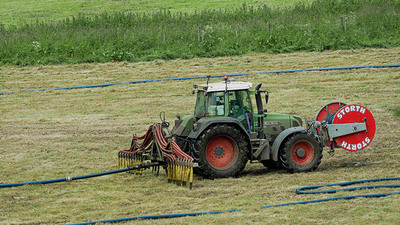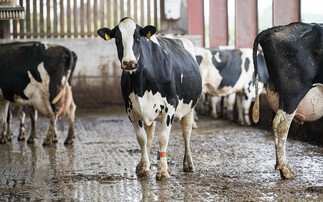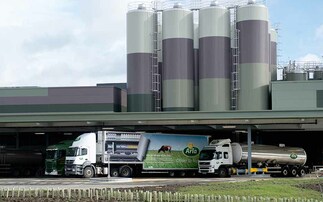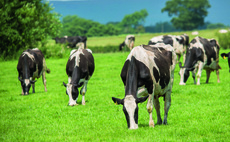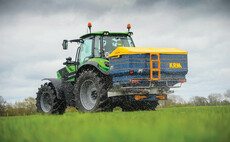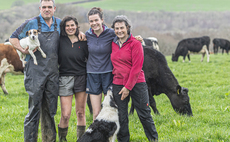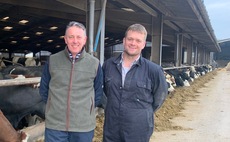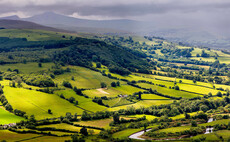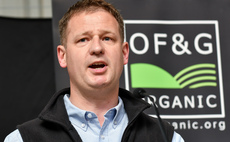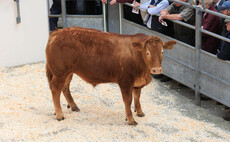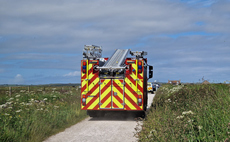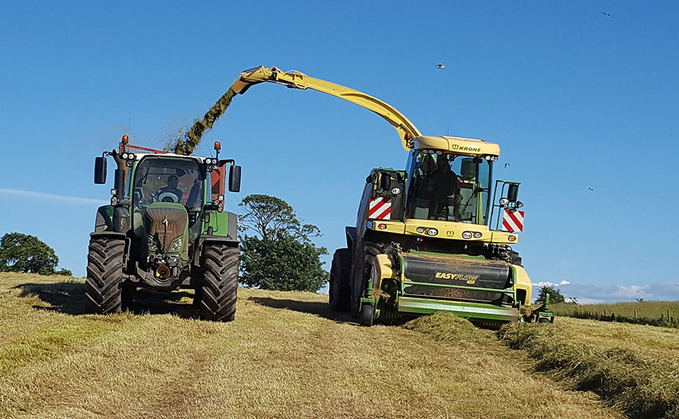
Whether it is timings of slurry application, tyre size or how machinery travels on grassland, everything is designed to prevent soil compaction at Warnockland Farm, Ayrshire.
Ayrshire farmer Andrew Welsh says: "I reckon if we just went all guns blazing, we could easily lose 15-20% of yield by not concentrating on reducing compaction." That is a yield drop any farmer can ill-afford to lose.
However, with grass silage the only forage fed to the 260-cow herd at Warnockland Farm, and all beef calves taken to stores, producing plenty of quality stocks is vital.
Heavy clay subsoils, coupled with an annual rainfall of 55 inches, means soils can compact easily.
As a result, the Welsh family have always worked to reduce compaction risk as best they can.
Investing in their own kit has allowed them to make silage when grass is ready and deal better with ‘catchy' weather.
It has also enabled them to limit compaction at harvest by managing how machinery travels.
Their silage-making set-up now includes a 600HP Krone Big X 600 self-propelled forager, Krone Swardrow 1000 and Krone triple mowers.
Larger kit means they can work faster and cut and ensile in two days, which has improved silage consistency.
However, the additional weight has added to soil compaction potential at silaging.
Mr Welsh says this makes following the principles of Controlled Traffic Farming (CTF) even more important, although they do not follow it to the letter.
"You don't have the forgiveness with the sheer weight of machinery.
You've got to think a lot more about what you are doing.
If you dive in, you can cause a lot of damage very quickly." n All the steps taken by Mr Welsh help maximise yield and quality, which is why he's been one of Yara's nominees in the Grass YEN (Yield Enhancement Network) Competition for the last two years.
How to reduce compaction risk
To reduce compaction risk throughout the season, the team:
- Avoid spreading slurry when ground is wet
"We don't mind waiting until April to spread slurry.
We would rather have fewer tyre marks and less compaction than slurry on a field," explains Mr Welsh.
"We have seen it before where we haven't had enough storage and spread slurry in the winter - you could see the wheeling through the growing season and there was a loss of yield on those tyre marks."
Opt for big tyres.
The forager has 800mm tyres on the front and 650mm tyres on the back, while all tractors run 600mm or wider and 900mm for applying slurry.
That means all of the machines can go anywhere on the farm, without damaging soils.
- Start from the longest field edge first
Whether it is fertiliser spreading, liming, mowing, rowing up or trailer traffic, machinery travel always starts on the longest, straightest edge of a field.
The only one that does not follow this line is slurry which is applied by dribble bar.
This area will then be ploughed at a 25 to 30-degree angle from that straight edge to address compaction.
- Think about how silage trailers travel on grassland
If silage trailers are loaded at the top of a field, they have to travel up and along the headland to get to the gate or straight back down the way they came to the headland and out.
When they move round the headland and it is wet and sticky, they travel as close to the hedge as possible to keep compaction there.
"This is a halfway house to CTF, most traffic moves in the same direction in the ups and downs of a field, but we don't run machinery too many times on the same track," adds Mr Welsh.
- Swap from smaller to larger equipment
When the farm was running smaller machines, the mower, rake and forager were all running on the same tracks.
By moving to triple mowers and a 40ft rake, the mower wheelings are on different tracks, therefore reducing compaction by a third.
In addition, the extra width on these newer machines will reduce wheelings and the likelihood of compaction across the field by half.
"If you can produce better, even quality grass, it can help produce more milk and save money on concentrate," Mr Welsh says
